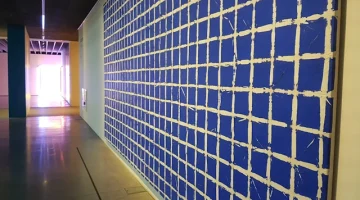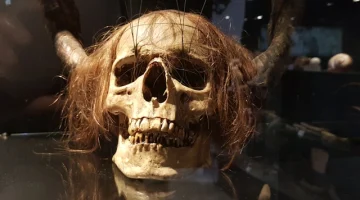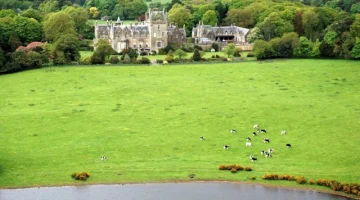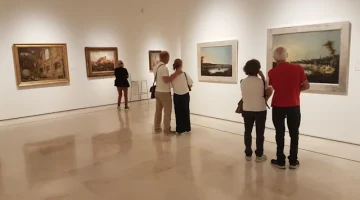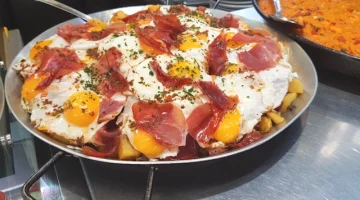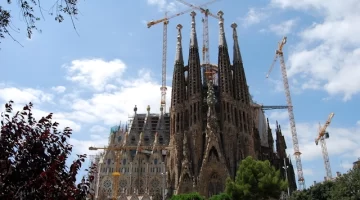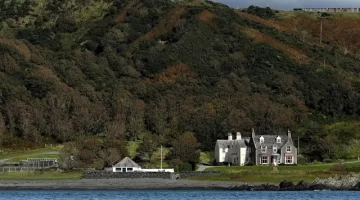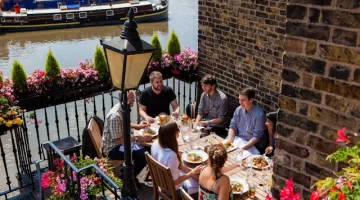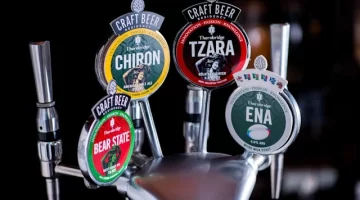Nabeul
The Travel Pages visits Nabeul in Tunisia, near Hammamet on the Cap Bon Peninsula and noted for perfume, ceramics, embroidery, and a good market on Fridays.

About eleven miles to the north of Hammamet, and easily reached by bus or taxi, is Nabeul, the main town of the Cap Bon Peninsula. This fertile area of land juts out into the Mediterranean Sea, separating the Gulf of Tunis from the Gulf of Hammamet. It is thought that this is the end of a piece of land which once stretched all the way to Sicily and linked Africa with Europe.
Fruit, Vegetables, Vineyards
Cap Bon is a green and well-watered area where most of the country’s vineyards are situated, as well as extensive groves of orange, lemon and olive trees. Other fruits and vegetables are also grown here, as they have been since before Roman times. The fact that the peninsula is also surrounded by some fine beaches made it an inevitable centre for tourism too.

Nabeul
Nabeul was a busy town long before modern tourism arrived, and so its centre it has a much more Tunisian feel than some of the beach resorts. In fact the town centre is about a mile from the beach area, where the hotels, shops and restaurants have mainly been built, although the two areas are inevitably merging. Nabeul makes a good day out from Hammamet, especially on a Friday when its weekly market attracts visitors from all over the north of Tunisia.
TUNISIA TRAVEL TIP
There’s good news and bad news about the Friday market. The good news is that the traders have less time for haggling than usual. The bad news is that this is because the market is so enormously popular that prices are high, there are plenty of visitors who pay them without question, and the traders don’t usually need to waste time haggling unless trade is slow.
TUNISIA TRAVEL TIP
There’s good news and bad news about the Friday market. The good news is that the traders have less time for haggling than usual. The bad news is that this is because the market is so enormously popular that prices are high, there are plenty of visitors who pay them without question, and the traders don’t usually need to waste time haggling unless trade is slow.
Shopping in Nabeul
Nabeul is where you will find one of the best selections of pottery in the country, as it has been a major centre for ceramics for centuries. The potters here have been influenced by the Phoenicians, the Romans, and the Andalucians from southern Spain. As a result there’s a bewildering array of choices, from camels on cups to rather more tasteful decorative dishes, especially the local green and yellow ones.
To see examples and prices without having to haggle, pop into the government shop, ONAT, on Avenue Habib Thameur. In contrast, the Friday market is where you may get slightly cheaper prices but only with a struggle.
Nabeul is also known for the production of perfumes, especially jasmine and wild orange flowers: it is in the middle of a fertile orange-growing region. Other local items to look out for include embroidery and woven mats.

What to See and Do in Nabeul
The Friday Market. See also under ‘Shopping’. This weekly event has developed into one of the major tourist markets in Tunisia, with part of the town closed off to traffic to accommodate the crowds. Day trips are organised at other resorts, bringing coaches full of visitors.
The Medina and Souk El Balgha. On any day other than Friday, when everywhere is really crowded, be sure to also explore the Medina and the Souk El Balgha, ‘balgha’ being the leather slippers without heels that Nabeul is also noted for. There are other souks nearby too.
Archaeological Museum. Worth going to if you’re keen. The small collection is housed around a courtyard, but the displays are only explained in Arabic and French. You can hire an English-speaking guide for a small tip on top of the entrance fee.
Neapolis. Also mainly for the enthusiast, this site goes back to the 5th century BC when it was founded by the Phoenicians. Like Carthage, it was destroyed by the Romans and then rebuilt by them. Excavations began in the 1960s but it is rather overgrown in places. A map would be useful but the only one available is attached to a wall in the museum. Ignore the sign which says ‘This is closed’ but walk down the track to the sea, on the Nabeul side of the sight, as the entrance is there.
Nabeul Beaches

The beaches here generally aren’t as good as the ones in nearby Hammamet, and the best are the ones that are used by the smart hotels, so if you plan to visit and spend some time on the beaches it’s best to pay to use their facilities.
Nabeul Food

Nabeul is especially noted for its version of the ubiquitous Tunisian chili paste, harissa. Be sure to try some and see if you can spot the difference in taste.
OUR TUNISIA GUIDE
This Travel Guide to Tunisia is by award-winning travel writer Mike Gerrard. The guide covers Tunis, Carthage, Sidi Bou Said, archaeological sites like Dougga, excursions to the Sahara Desert, and all the main Tunisian beach resorts and tourist towns.
Amazon 5-Star Reviews
‘Interesting information straight to the point and informative, I like the mix of tourist information and cultural knowledge and it is not a lengthy read, just enough to inform you about Tunisia.’
‘Very useful information including things to see and do and even how to avoid local pit falls good overview of all the areas.’
‘Very useful guide for visiting Tunisia and very good value for the money. I found the book to be very informative.’
Read more on Amazon or click on the cover.

